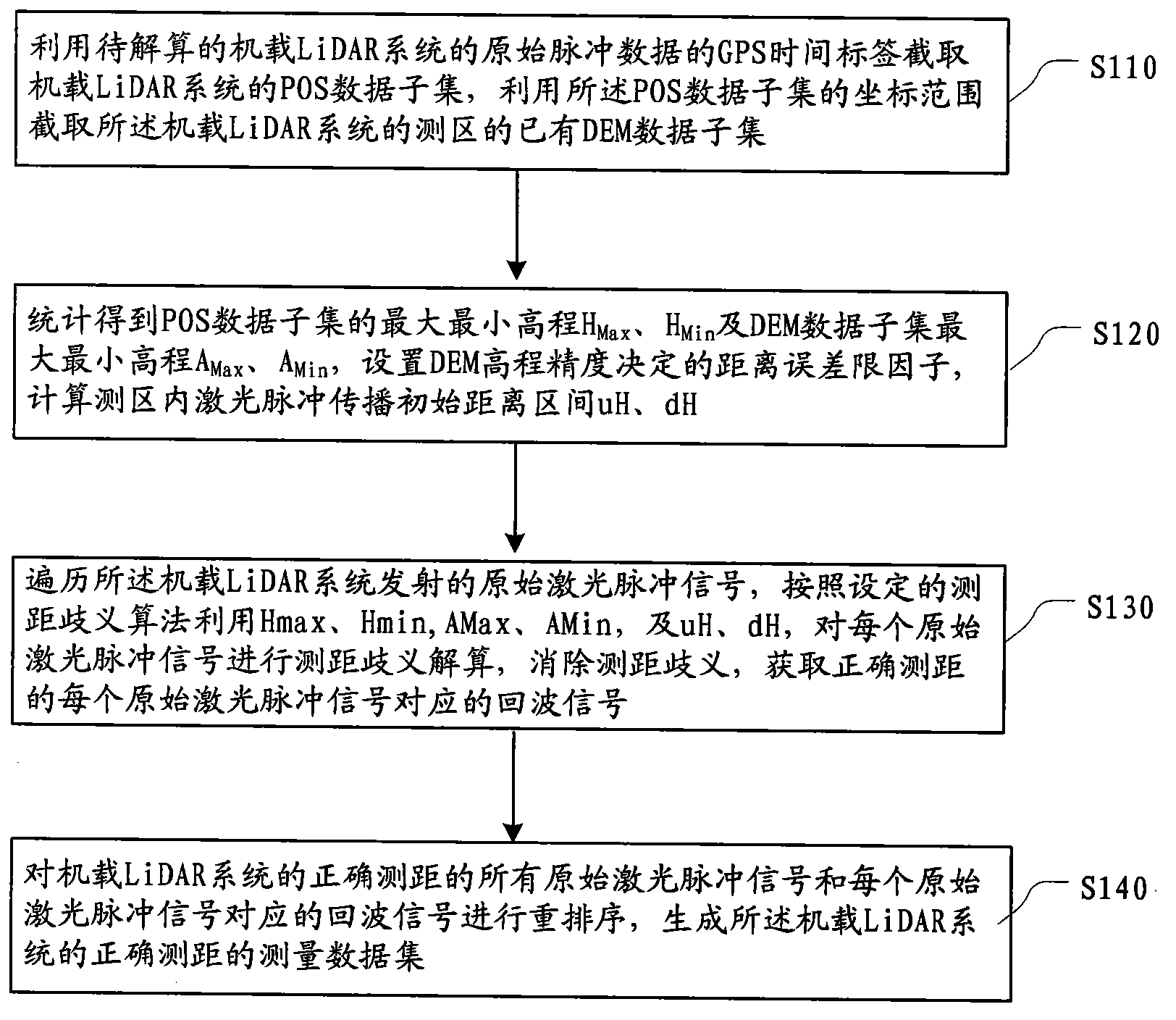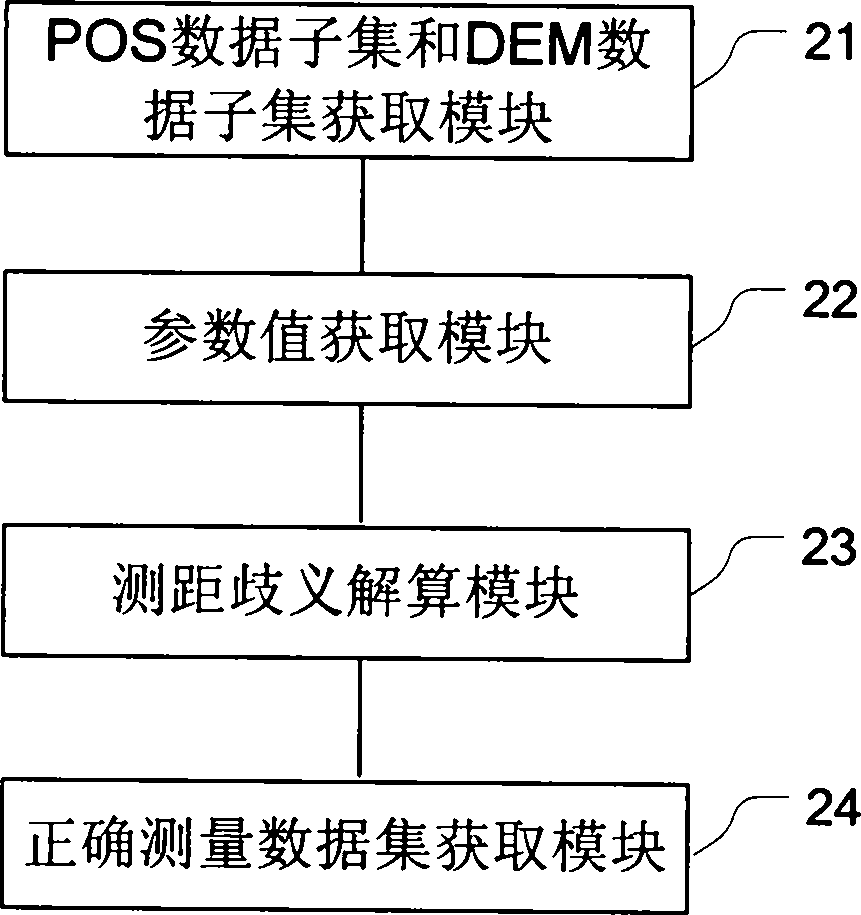Method and device for eliminating distance measuring ambiguity of high repetition frequency airborne laser radar system
An airborne lidar, ambiguous technology, applied in measurement devices, radio wave measurement systems, electromagnetic wave re-radiation and other directions, can solve the problems of inability to judge echo signals, increase system costs, and return time lag of echo signals.
- Summary
- Abstract
- Description
- Claims
- Application Information
AI Technical Summary
Problems solved by technology
Method used
Image
Examples
Embodiment 1
[0069] According to the IEEE standard RADAR definition, Second Time Around echoes refer to echo signals received within a time range exceeding one PRI but less than the PRI. Similarly, Multiple Time Around (MTA) echo means that the echo signal is received after passing through several PRIs. The initial practical application of the MTA concept appeared in the ground RADAR system, which uses the Multiple PRF (Multiple Pulse Repetition Frequency) transmission method, and uses the Chinese remainder theorem or shift register technology in the real-time signal processor and so on to calculate the unambiguous ranging distance of the target.
[0070] POS (Position and Orientation System) system, also known as IMU / DGPS system, consists of dynamic differential GPS (DGPS), inertial measurement unit (IMU), main control computer system (PCS) and corresponding post-processing software. It is composed of parts, which can measure its position and attitude in real time during the imaging proc...
Embodiment 2
[0101] This embodiment provides a device for eliminating the ranging ambiguity of the high-repetition airborne LiDAR system, and its specific implementation structure is as follows figure 2 As shown, it can specifically include the following modules:
[0102] POS data subset and DEM data subset acquisition module 21, for using the original pulse data of the airborne LiDAR system, select the POS data subset corresponding to the time range and the DEM data corresponding to the spatial range of the survey area of the airborne LiDAR system Subset;
[0103] The parameter value acquisition module 22 is used to obtain the maximum and minimum elevation of the POS data subset, the maximum and minimum elevation of the DEM data subset, set the distance error limit factor of the DEM data subset, and calculate the The initial distance interval of laser pulse propagation in the survey area and the upper and lower tolerance thresholds of the spatial distribution of ground objects;
[01...
PUM
 Login to View More
Login to View More Abstract
Description
Claims
Application Information
 Login to View More
Login to View More - R&D Engineer
- R&D Manager
- IP Professional
- Industry Leading Data Capabilities
- Powerful AI technology
- Patent DNA Extraction
Browse by: Latest US Patents, China's latest patents, Technical Efficacy Thesaurus, Application Domain, Technology Topic, Popular Technical Reports.
© 2024 PatSnap. All rights reserved.Legal|Privacy policy|Modern Slavery Act Transparency Statement|Sitemap|About US| Contact US: help@patsnap.com










